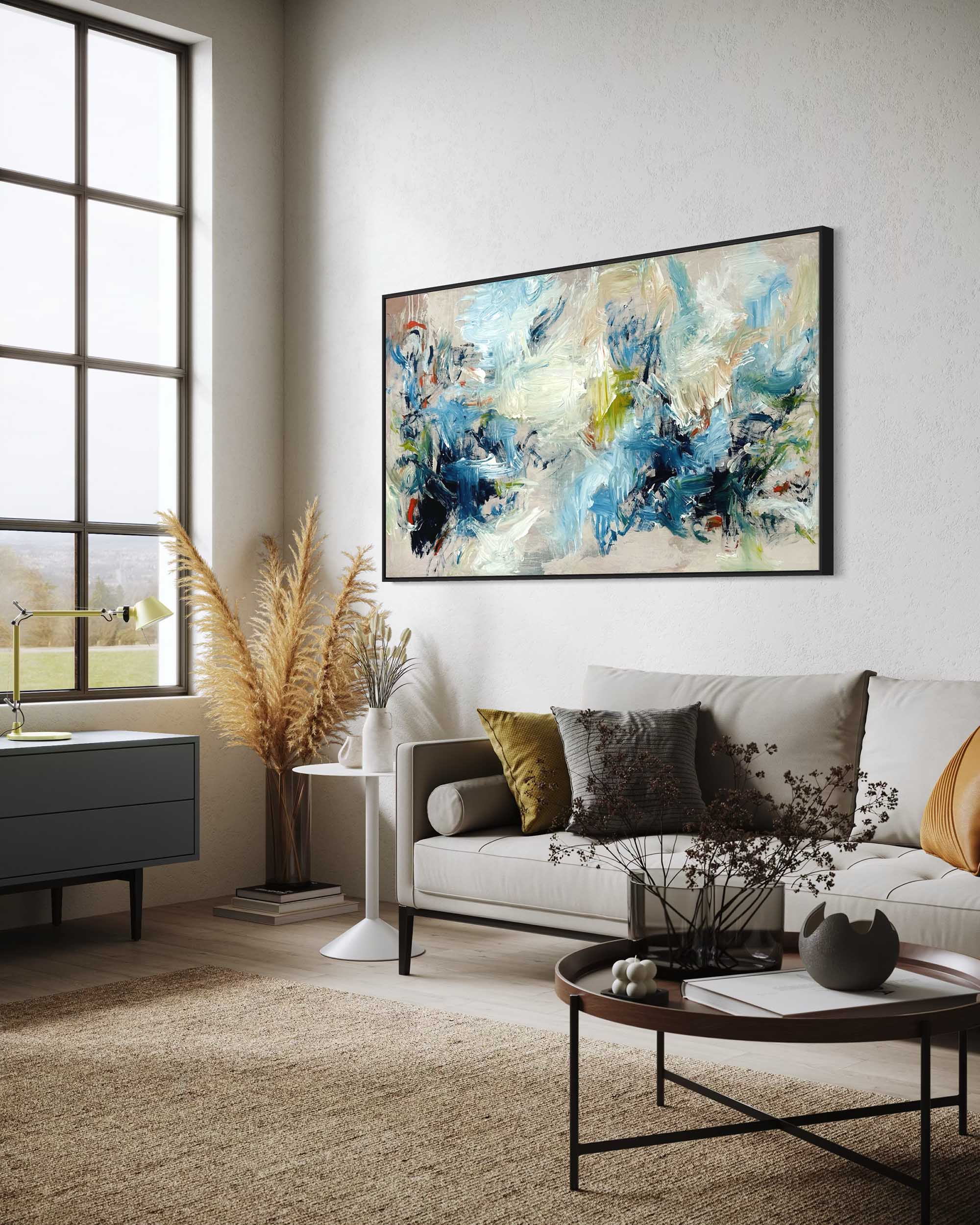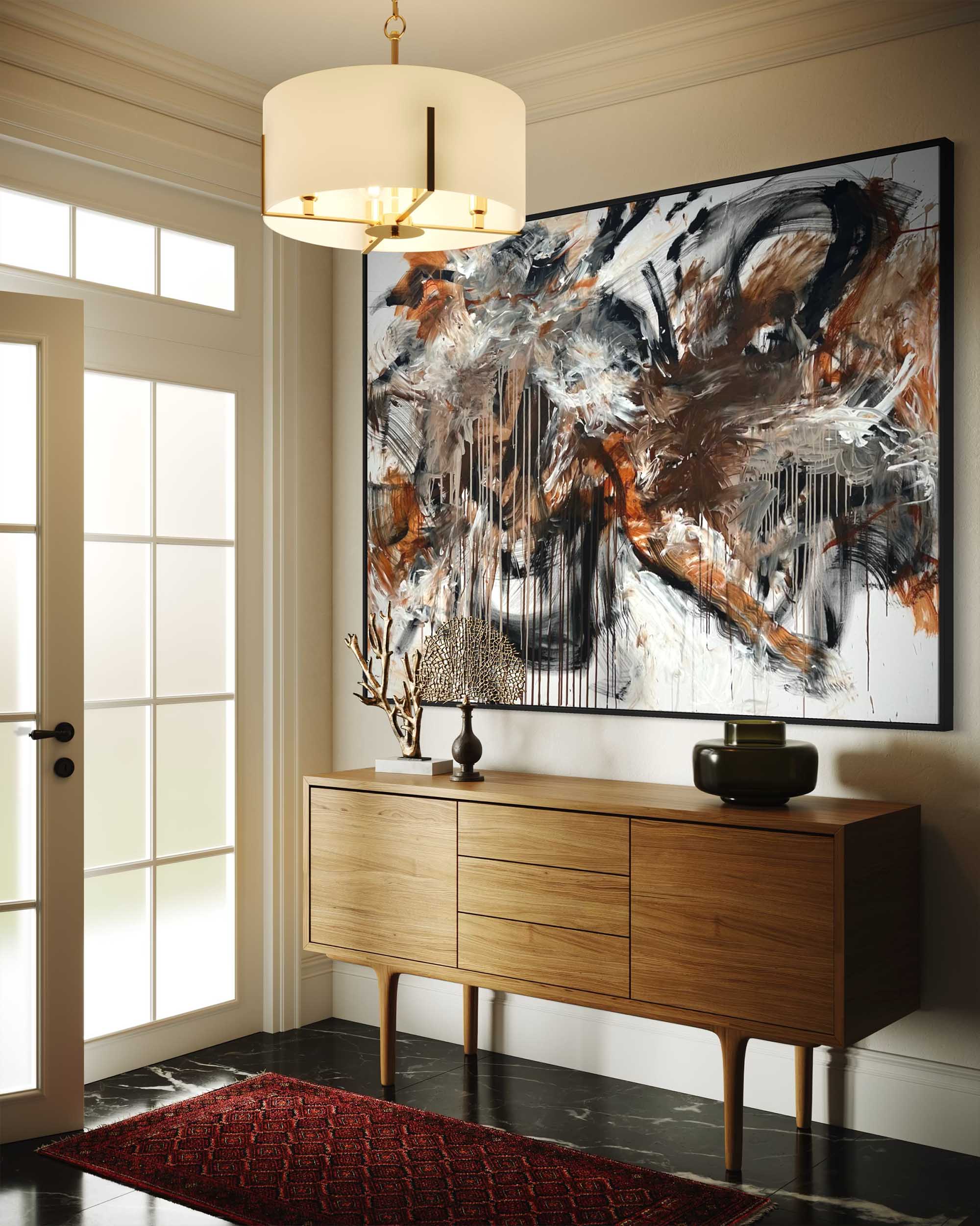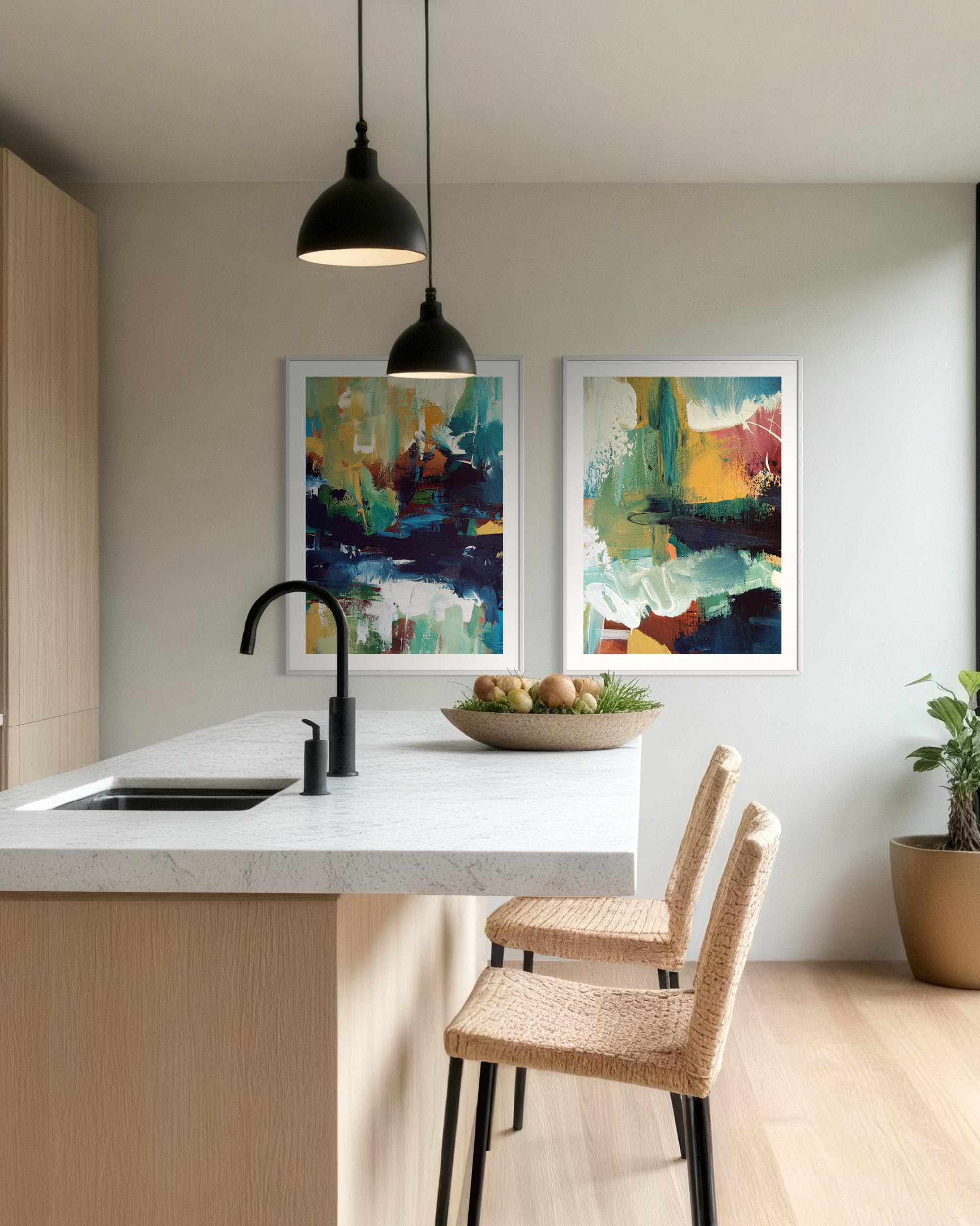Original art is one-of-a-kind. There's nothing quite like an original, authentic painting which has been hand-painted and is sure to be admired by you in your home or office for years to come, and passed down to future generations to enjoy.
Whether you're beginning to look at investing art, or you are a seasoned art collector looking to acquire new pieces for your collection, when buying an original painting, there are several important factors to consider to ensure authenticity, quality, and value. Discover our expert tips in our guide to investing in original art.
 From the new original paintings collection by artist Omar Obaid, exclusively available at Abstract House.
From the new original paintings collection by artist Omar Obaid, exclusively available at Abstract House.
1. Authenticity
- Provenance: Check the painting's history. Provenance is the documentation or a clear chain of ownership that traces back to the artist, proving the painting’s authenticity. Our customers love that your painting comes with a clear provenance and receipt, guaranteeing a chain of custody direct to the artist.

Artwork: Follow Me Original Abstract Painting by Artist Omar Obaid
-
Certificates of Authenticity (COA): Many artists, galleries, and auction houses provide COAs, especially for well-known works. Ensure that this document is genuine and includes the artist's signature. At Abstract House, every painting comes with a signed and dated Certificate of Authenticity. This is also signed by the artist.
- Artist Signatures: Look for a signature on the painting itself. Research how the artist typically signs their work to verify it matches their usual style. One of the benefits of purchasing original paintings at Abstract House is that your paintings will be signed and dated on the back by the artist.
2. Condition of the Painting
- Surface Integrity: Inspect the painting for cracks, fading, or flaking, especially in older works. Damaged paintings can lose value or require expensive restoration.
- Medium Quality: Determine if the materials used (paint, canvas, etc.) are of high quality. Poor materials may degrade faster.
- Framing: If the painting is framed, check if the frame is appropriate and in good condition. Sometimes the frame can be a significant part of the value.
3. Artist Reputation
- Artist’s Standing: Research the artist's career, reputation, and market demand. Well-known or emerging artists may increase the painting's investment value over time. Take a look at our Artist Interview with Omar Obaid to discover the story behind his artwork.
- Previous Sales: Look at auction records or gallery sales of the artist's works. Similar pieces by the artist can give an idea of fair market value. Browse our collection of original paintings to discover your new masterpiece.
4. Market Value
- Pricing Comparisons: Compare the price with other similar works by the same artist or artists of similar stature. Be wary of prices that are too high or suspiciously low.
- Appraisals: If the painting’s value is significant, get it appraised by a reputable professional.
5. Art Style and Composition
- Artistic Techniques: Understand the artist’s technique. Look closely at the brushwork, texture, and composition to assess the quality of execution.
- Theme and Style: Verify that the painting aligns with the artist’s known style and period. Significant deviations could raise questions about authenticity.
6. Legitimacy of Seller
- Reputable Source: Buy from established galleries, dealers, or auction houses that specialize in fine art. This reduces the risk of buying a counterfeit or stolen piece.
- Seller Credentials: Check the seller’s reviews or references. Online marketplaces can pose higher risks for fraud, so ensure the seller has a credible reputation.
7. Legal Considerations
- Ownership Documentation: Ensure the seller has clear title and ownership rights. Especially with high-value pieces, check that the artwork isn't listed as stolen or disputed.
- Import/Export Laws: If buying from overseas, familiarize yourself with the relevant regulations and taxes. Some countries have restrictions on exporting cultural heritage items.
8. Emotional and Aesthetic Appeal
- Personal Connection: Ultimately, buy a painting you love. Art is often a personal and emotional investment, so ensure the piece resonates with you.
- Suitability for Display: Consider the size, colors, and theme of the painting to ensure it fits well within your intended space.
9. Documentation and Insurance
- Written Agreement: Have a written bill of sale that outlines the specifics of the transaction, including the artist’s name, title of the painting, date, and price.
- Insurance: Once purchased, insure the painting, particularly if it’s valuable or irreplaceable.
10. Restoration or Preservation Needs
- Future Maintenance: Paintings created by living artists usually don't need much maintenance initially as long as they are properly framed. for older paintings and antique artworks, consider the costs or effort needed for future preservation. Some materials or techniques may require specific care over time.
Taking these factors into account will help ensure that you're making a wise, informed investment in an original painting.













